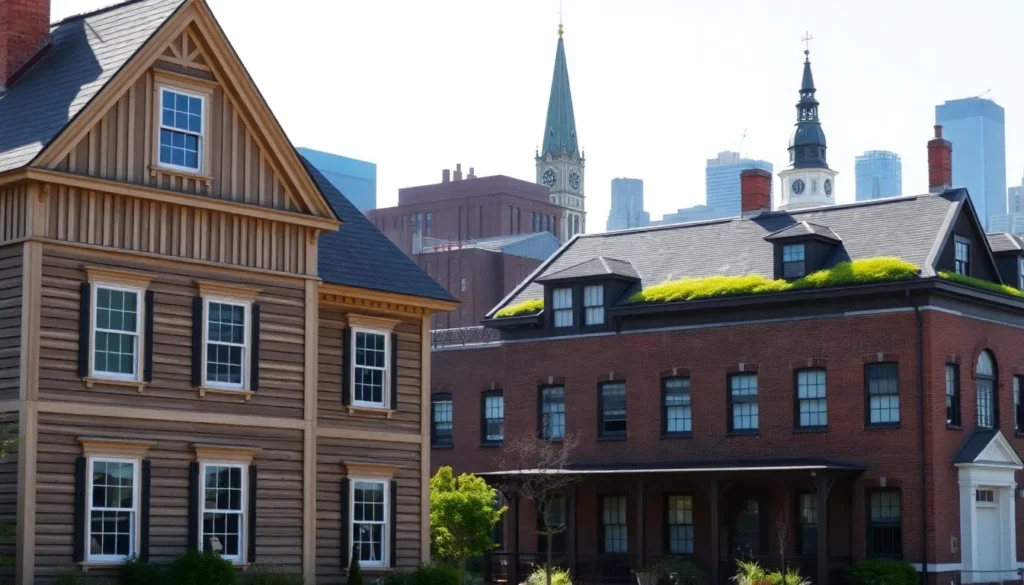Table of Contents
ToggleIf you’ve ever strolled through the streets of Chicago, you’ve likely gazed up in awe at the stunning skyline. It’s not just a bunch of tall buildings: it’s a masterclass in architectural innovation. Welcome to the Architecture Center Chicago, where past meets present in an explosion of creativity and historical significance. In this episode of architectural exploration, we’ll slice through layers of history with a dash of humor and a whole lot of heart, guiding you through the remarkable structures and visionary minds that have made this city a design mecca.
Overview of Architecture in Chicago

Historical Significance of Chicago Architecture
Chicago is often hailed as the birthplace of the modern skyscraper. This distinction didn’t simply fall from the sky: it emerged from a confluence of necessity and creativity following the Great Chicago Fire of 1871. The city had to rebuild itself, and boy, did it do so with style. From Louis Sullivan’s intricate ornamentation to the blunt functionality of the Bauhaus movement, Chicago’s architectural timeline is a thrilling ride through styles and innovations. The city’s rich architectural tapestry showcases not just aesthetics, but also socio-economic narratives that shaped its growth.
Key Architectural Movements in Chicago
In the late 19th and early 20th centuries, Chicago School architecture championed steel-frame structures, leading the charge for taller buildings and freeing up interior space. Following this, the Prairie School, with Frank Lloyd Wright at the helm, questioned European influences, emphasizing organic architecture that harmonized with the environment. This wasn’t just rebellion: it was a bold statement about American identity and the essence of spaces where people live and work. Fast forward to the late 20th century, and Postmodernism took a fresh spin, mixing old-world charm with contemporary whimsy, a testament to Chicago’s dynamic design evolution.
Prominent Chicago Architects and Their Contributions
Notable Buildings in Chicago
Delving deeper into Chicago’s architectural narrative, one can’t overlook gems like the Willis Tower, which stood as the tallest building in the world for over two decades. Its design, a bold statement of modern engineering, reflects how skyscrapers can be both functional and iconic. Then there’s the John Hancock Center, not just for its height but for its unique shape, which practically screams ‘Chicago’ when you see it from a distance. These buildings showcase the incredible ingenuity and vision that Chicago architects have brought to life.
Innovative Designs and Urban Planning
The layout of Chicago isn’t just a matter of chance or whimsy: it’s driven by strategic urban planning that prioritizes aesthetics and functionality. Architect Daniel Burnham planted the seeds for a cityscape emphasizing beauty and accessibility through the Plan of Chicago in 1909. This grand vision paved the way for parks, boulevards, and even waterfront enhancements, ensuring that urban life flourished amidst natural beauty. More recently, contemporary architects like Gillespies have taken this plan and run with it, designing public spaces that foster community while retaining Chicago’s historical essence.
Visitor Information for Architecture Center Chicago
Exhibitions and Educational Programs
The Architecture Center Chicago isn’t just a feast for the eyes: it’s a hub of learning and inspiration. Regular exhibitions investigate into various architectural styles and movements, often featuring local and global architects pushing the boundaries of design. Want to understand the interplay of light in buildings? They offer classes and workshops that cater to everyone, from novices to seasoned professionals. Jump into the deep end of architectural knowledge and leave with a mind buzzing with ideas.
Networking and Community Engagement Opportunities
For those eager to mingle with fellow design enthusiasts, the center plays host to numerous events aimed at fostering community engagement. These events often feature panels with leading architects, giving attendees a chance to gain insights directly from the minds behind the structures. Whether it’s a lecture series or a community project, there’s always an opportunity to connect, collaborate, and contribute to Chicago’s vibrant architectural conversation.


